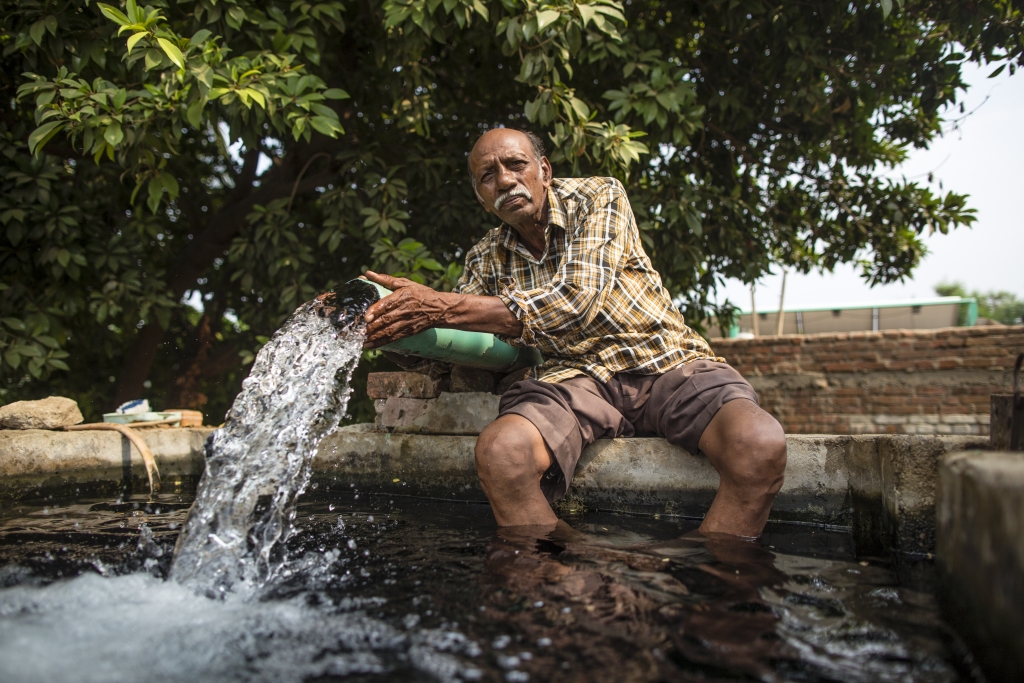New reports heighten awareness of an urgent imperative
By Claire Swingle, Princeton in Asia Intern, IWMI-Nepal

There is a growing global consensus about the critical importance of groundwater for sustainable development and climate change adaptation. The World Economic Forum, in its Global Risks Report 2019, stresses for the first time that depletion of this critical resource is causing megacities to sink, with significant risks to water security and resilience, while also threatening food production systems.
At the recent 30th UN-Water meeting, attended by more than 50 delegates representing UN-Water members and partners and with over 20 observers from governments and other organizations, the decision was taken to make groundwater the theme of World Water Day 2022. The theme of the UN World Water Development Report for that year will be “Groundwater: Making the Invisible Visible,” a decision advocated by partners in the Groundwater Solutions Initiative for Policy and Practice (GRIPP), particularly the International Groundwater Resources Assessment Centre (IGRAC).
In a similar vein, a new report prepared by the United Nations University Institute for Water, Environment and Health (UNU-INWEH), in partnership with the International Water Management Institute (IWMI) and the CGIAR Research Program on Water, Land and Ecosystems (WLE), analyzes the links between groundwater and various targets of the Sustainable Development Goals (SDGs). Although none of the SDGs mentions groundwater explicitly, 53 of the 169 targets, the authors point out, have clear links to groundwater, particularly those pertaining to SDG 6 (water and sanitation), SDG 12 (responsible consumption and production) and SDG 13 (climate action), indicating the importance of groundwater for achieving the goals.
Most of these links are “reinforcing,” which means that achievement of an SDG target will have a predominantly positive impact on groundwater or will be contingent on improved groundwater management. For instance, working to achieve SDG targets 1.5 and 8.4 (resilience to extremes and disasters, and decoupling economic growth from environmental degradation, respectively) will likely lead to positive groundwater outcomes, while also depending on them. Other links are “mixed” or “conflicting.” For instance, efforts to ensure drinking water supplies for all (SDG 6.1) could exacerbate groundwater depletion in some regions, depending on how policies are designed and implemented, while attaining food security (SDG 2.1) and doubling agricultural productivity (SDG 2.3) could be directly conflicting.
Another new publication emphasizing the critical role of groundwater in sustainable development is the recently launched document Incorporating environmental flows into “water stress” indicator 6.4.2 – Guidelines for a minimum standard method for global reporting. Published by the Food and Agriculture Organization of the United Nations (FAO), which is the custodian of SDG 6.4.2 (reducing water stress), these guidelines are designed to help countries access data for the assessment of water stress, particularly environmental flows, which forms part of the global SDG reporting process.
Various partners in GRIPP contributed to the guidelines, including IWMI and UNU-INWEH. IWMI principal researcher Chris Dickens took part in the launch event in Rome, presenting the Global Environmental Flow Information System (GEFIS), an online platform developed by IWMI. GEFIS provides globally distributed data on environmental flows, which can be aggregated at the river basin level or at any geographic unit that users may specify. The tool also estimates sustainable groundwater abstraction, based on links between baseflow, generating environmental flows, and groundwater storage.
These two new reports present a structured way to heighten the visibility of groundwater in the 2030 Agenda and to implement integrated approaches for its sustainable management. As reviews of progress toward the SDGs get underway, countries will need new tools that better enable them to generate the data and information required for their Voluntary National Reviews. Addressing groundwater management in this work is an urgent imperative.

